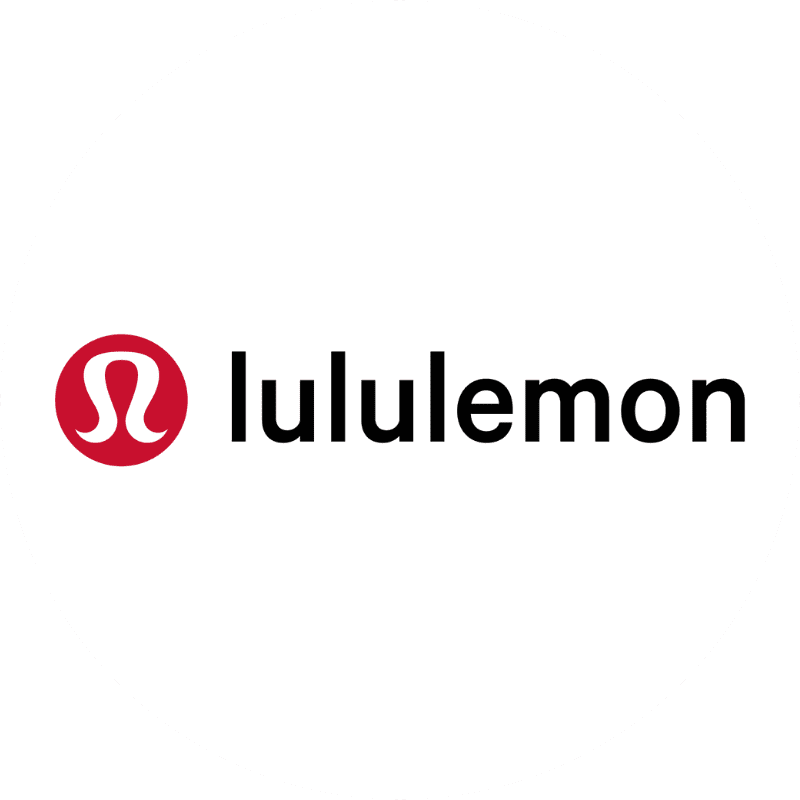Introduction
It’s impossible to go to any yoga studio or walk around town today without noticing someone wearing Lululemon (NASDAQ: LULU). Yoga and fashion are practically linked to the Lululemon brand, which has evolved from a sportswear company to a lifestyle brand. How did Lulemon become a major apparel brand in the past few years, even surpassing Adidas to become the second largest sportswear brand in the world! What makes everyone spend over $100 on a pair of leggings? Here’s a comprehensive look at the Lululemon brand.
What is Lululemon?
Before founding Lululemon, Denis “Chip” Wilson founded another brand, Westbeach Snowboard, in 1979, specializing in skiing, snowboarding and wakeboarding for 20 years, before selling the brand in 1997 and retired.
One day, he attended his first ever yoga class in Vancouver, Canada, he felt energized and emotionally elated, and immediately fell in love with the sport. He found that the cotton clothing used for yoga at that time was not breathable and lacked flexibility, which was not suitable for yoga, a sport that requires physical movement.
Therefore, in 1998 he founded Lululemon Athletica, and set up a studio to design this set of yoga-specific clothing. In order to pay the rent, he turned the design space into a yoga studio at night for yoga instructors to rent and teach small classes, while also allowing them to try on the latest Lululemon products and gather valuable feedback.
Name & Logo
When naming the company, Chip pointed out that the Japanese loved his skateboard brand Homless because the name had the letter L in it which local Japanese companies don’t use, so when naming Lululemon Chip wanted a name with “three L’s” to see if he could get “three times the money.” Lululemon’s A-shaped logo came from the one of the company’s original name ideas, “Athletically Hip”, which was not chosen. Within a few short years, Lululemon’s has become a household name in the minds of many yogis around the world.
Lululemon’s Strategy
The sportswear market is highly competitive, with competition from established companies such as Nike, Adidas, Under Armour, etc. who are expanding their production and sales, as well as retailers such as Gap and Victoria’s Secret who have expanded into women’s sportswear. What business model has Lululemon adopted to stand out from the crowd?
Community Based Marketing & Not hiring celebrities
One of Lululemon’s key business strategies is to never hire celebrity endorsements. Unlike its competitors, Lululemon has no major marketing campaigns, no flashy billboards, no celebrity partnerships, and no TV commercials. Lululemon chose to take a more hands-on approach to building its brand.
Lululemon has adopted a community-based strategy and it has been quite successful. They have built a global network of 48 brand ambassadors, who are great but not very well known athletes. And in areas where Lululemon has physical stores, there are 482 store ambassadors, most of whom are leaders in the fitness community. At Lululemon physical stores, these store ambassadors organize meet-ups, such as yoga classes, and other events. In return, the ambassadors receive early access to Lululemon’s new products and grants, and Lululemon makes improvements based on their post-product feedback. It’s a win-win situation for both parties.
This was a strategy adopted in the early days of Lululemon, when the company initially lacked a marketing budget and had to rely on the quality of its products to please its customers and then hope they would share them with their friends. Because of this authentic relationship, Lululemon was able to avoid relying on marketing. In fact, Lululemon’s profit margin is almost twice that of Nike.
Yoga Classes in Store
Lululemon takes customer interaction very seriously, and almost every store hosts daily or weekly events, including various yoga classes, self-defense classes, and more. At the end of each business day, they close the store and allow customers to participate in these activities directly in the store. If you don’t have your yoga gear with you, such as your shirt or pants, they will let you try on their products for free.
In-store yoga classes are not available in Hong Kong at the moment, but Lululemon is still working with various organizations to hold yoga classes. For example, in June this year, Lululemon partnered with M+ to offer 12 one-hour classes focused on wellness, including yoga, HIIT (High Intensity Interval Training), and meditation classes. These classes are led by Lululemon’s brand ambassadors and offer the public the opportunity to exercise in the fresh air at M+’s oceanfront promenade, Horizon Terrace, facing Victoria Harbour.
Lululemon has also partnered with The Yama Foundation, a Hong Kong-based charity that provides equal access to yoga, art and meditation services to Hong Kong’s most vulnerable communities, enabling them to develop self-acceptance and self-reliance.
Quality Clothing with High Price Margins
Lululemon differentiates itself from its competitors in terms of price positioning. While branded yoga pants typically cost $40, Lululemon yoga pants cost over $110. The company emphasizes that the quality of their products justifies their prices and that their customers are more than happy to pay them. Unlike many apparel retailers, Lululemon does not offer any discounts, but new products are generally sold out within six weeks. With patented materials such as Luon, Nulu, Boolux and Luxtreme, it is difficult for competitors to duplicate their products and at the same time, they are able to offer a higher price tag.
Recent Developments
Lululemon’s success is undeniable, as they raised $330 million in their initial public offering in July 2007. They have proven that their unique business model can also build a path to success. In 2021, Lululemon’s net revenue grew 42% to USD 6.3 billion and net income grew 66% to USD 975 million. Gross margins reached a staggering 58%, even higher than luxury brands like Ferrari. In 2022, Lululemon surpassed Adidas to become the world’s second largest sportswear brand with a market capitalization of USD 41.5 billion, while Nike still holds the number one spot with $150 billion, three times higher than Lululemon.
Lululemon currently has 574 stores worldwide and opened 53 new stores in 2021, including 31 stores in China, 7 stores in other Asia Pacific regions, 10 stores in North America, and 5 stores in Europe, with the goal of expanding into the U.S. and Asia Pacific markets.
In terms of products, yoga products are still the mainstay of Lululemon, but Lululemon is constantly looking to develop in many ways, with more running, tennis, golf and hiking apparel coming in the future, and has recently launched its own running shoes.
Conclusion
The secret to Lululemon? Focus on what you do best, and focus on your customers. Since its inception, Lululemon has been cultivating its customer base, creating a yoga community and turning them into brand advocates. This has allowed Lululemon to sell its products at almost full price without having to invest any money in marketing.
References
- Lululemon Yoga Classes at M+: https://www.scmp.com/lifestyle/travel-leisure/article/3181946/yoga-meditation-lululemon-hong-kongs-m-museum-summer
- Lululemon 2021 Annual Reports: https://corporate.lululemon.com/~/media/Files/L/Lululemon/investors/annual-reports/lululemon-athletica-inc-ar2021.pdf
- Lululemon 2022 Q2 Results: https://corporate.lululemon.com/media/press-releases/2022/09-01-2022-210532821



